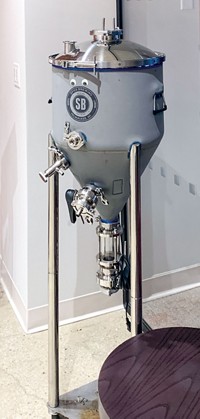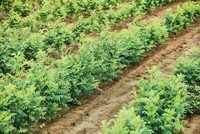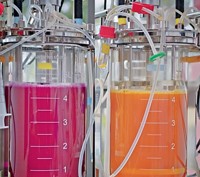Advertisement
Grab your lab coat. Let's get started
Welcome!
Welcome!
Create an account below to get 6 C&EN articles per month, receive newsletters and more - all free.
It seems this is your first time logging in online. Please enter the following information to continue.
As an ACS member you automatically get access to this site. All we need is few more details to create your reading experience.
Not you? Sign in with a different account.
Not you? Sign in with a different account.
ERROR 1
ERROR 1
ERROR 2
ERROR 2
ERROR 2
ERROR 2
ERROR 2
Password and Confirm password must match.
If you have an ACS member number, please enter it here so we can link this account to your membership. (optional)
ERROR 2
ACS values your privacy. By submitting your information, you are gaining access to C&EN and subscribing to our weekly newsletter. We use the information you provide to make your reading experience better, and we will never sell your data to third party members.
Green Chemistry
Movers And Shakers
Tinctorium cofounder Tammy Hsu wants to use bacteria to dye blue jeans
The entrepreneur explains how engineered bacteria can make indigo synthesis and dyeing more ecofriendly
by Esther Landhuis, special to C&EN
November 10, 2019
| A version of this story appeared in
Volume 97, Issue 44

In the early 1880s, chemist Adolf von Baeyer devised a scheme that would revolutionize the fashion industry. For thousands of years prior, people had dyed fabric blue using powders painstakingly extracted from the leaves of indigo plants (Indigofera tinctoria). But thanks to Baeyer’s Nobel Prize–winning chemical synthesis of the indigo molecule, factories around the globe now churn out some 70,000 metric tons of the iconic dye each year—much of it to color the global wardrobe staple denim.
Yet the $66 billion industry is not without its faults: large-scale indigo synthesis uses a lot of energy and water. It also requires the use of toxic chemicals like formaldehyde. In recent years, a number of suppliers have tried to make textile dyeing more sustainable and simultaneously replace problematic chemicals. One of the latest companies to pursue this goal is Tinctorium, a San Francisco Bay Area start-up that launched earlier this year. It is trying to produce the world’s most sustainably dyed jeans with indigo made by engineered bacteria. Esther Landhuis spoke with microbe tinkerer and Tinctorium cofounder Tammy Hsu, whose PhD research at the University of California, Berkeley, gave rise to the company’s core technology.
What are your concerns about today’s indigo-dyeing process?
Vitals
▸ Hometown: Palo Alto, California
▸ Current position: Cofounder and chief scientific officer, Tinctorium
▸ Education: BS, bioengineering, Stanford University, 2013; PhD, bioengineering, University of California, Berkeley, 2019
▸ Essential habit: Coffee and a 13-ingredient superfood smoothie every morning
▸ Best professional advice received: Always direct your company toward the “North Star”—some core belief you strive for even when investors or market forces threaten to shift your course.
▸ Pairs of jeans she owns: Eight
▸ Preferred jeans style: Classic dark skinny
It’s basically two general problems. One is the production of indigo. This is a multistep chemical synthesis that uses large quantities of cyanide, formaldehyde, and a starting material called aniline, which is derived from petroleum. Synthesizing indigo requires these three toxic chemicals to be heated to high temperatures, which requires a lot of energy, and then water for cooling down the reaction afterward. So that’s the first bad part.
The second bad part is the reduction step. Since indigo doesn’t dissolve in water, you have to add a chemical reducing agent to turn it into water-soluble leucoindigo for dyeing. The one often used in industry is sodium dithionate because it’s fast and efficient. It’s bad for your skin and corrosive.
During your PhD, you synthesized indigo in the lab by engineering Escherichia coli bacteria to mimic what happens naturally in an indigo plant. How do this plant’s leaves make a deep-blue dye?
What they’re actually making is a colorless molecule called indican. In a separate part of their cells, the leaves produce an enzyme called β-glucosidase. Since these molecules exist in different cellular compartments, they don’t react. However, when you rub or chemically disrupt the leaves, the separated molecules come into contact. The glucosidase hydrolyzes indican, allowing it to turn into indigo. Crushing the plant’s leaves with a mortar and pestle turns the green leaves blue in a couple seconds.
How did you engineer the bacteria?
In the 1990s, a company called Genencor and a few other groups tried using E. coli to make indigo in hopes of making the industrial process more environmentally friendly. Genencor’s approach used an enzyme to convert an E. coli metabolite into a molecule called indoxyl, which dimerizes to form indigo powder. But that strategy only addressed the first of the two problems—indigo production. You would still have to reduce it to dye textiles.
Our method gets rid of both these problems (Nat. Chem. Biol. 2018, DOI: 10.1038/nchembio.2552). We identified the gene that codes for an enzyme that indigo plants use to convert indoxyl to indican and expressed the gene in E. coli. The resulting indican, which is water soluble, can then be collected from culture media and added to yarn. Then, adding β-glucosidase hydrolyzes indican to form indigo and dyes the yarn. The reduction step is not needed with our method.
At what point did you start to think seriously about starting a company?
I never really saw myself as an entrepreneur. But the project kept looking very promising, and I just thought, “Well, if I don’t do this, no one’s going to do it, so I might as well give it a try and see how it goes.”

During graduate school I joined several pitch competitions. In the first one I tried, in 2015, we got second place. It was a very small competition. But it was a validation that this is a solution people are interested in, that it could have legs. I also took two classes on how to form a start-up. I learned about pitfalls, basic investor terms, how to build a team, stuff like that. By fall 2018, I had incorporated and was looking into ways to get seed money. I applied to the IndieBio program—which provides funding, mentorship, and lab space for science start-ups—kind of on a whim. I got through a first interview, and they were like, “You need a cofounder.” I came in for another interview, and they were like, “You really need a cofounder.” So through my lab mate, I connected with Michelle Zhu, who left her Yelp job to join IndieBio’s 4-month program with me in February.
You reported that in 2015 you needed 18 L of culture to dye one pair of jeans. Has the efficiency improved since then?
With some combination of strain engineering and optimizing culture conditions, it now takes 5-ish L to make enough to dye a pair of jeans. We’re trying to improve further, first by figuring out how to keep the bacteria growing happily for longer. Although our dye is currently more expensive than the industry process, the increase in cost for the end consumer is small because dye is a small part of the total cost of production for a pair of jeans.
What do the next few years look like?
As soon as possible, we’d like to produce a limited line of about a thousand pairs of jeans to build awareness for the problem of denim dyeing and give consumers a feel for the product.

Our first dye run used a prototype machine that uses less water. So we want to test our technology on different dye equipment to show it can work in any situation. We’re trying to partner with fashion brands to release limited lines of jeans that are cobranded so customers can better understand the process of denim dyeing. It’s important for customers to be aware of the problem so they are empowered to choose a solution that’s more sustainable—better for the environment, better for dye workers. That’s on the business side.
On the science side, we’re basically looking to scale up our process. We want to scale up to thousands to tens of thousands of liters of dye in the next couple of years so we can perform trials with larger indigo-dyeing machines commonly used in the industry.
We think that now the time is right. In the past several years there’s been a trend of more sustainable materials for fashion—including the start of companies like Bolt Threads, which makes clothes from engineered spider silk; MycoWorks, which makes fibers from fungi; and animal-free leather companies. This is something that consumers are becoming more aware is an option. We want to add our own voice on the denim-sustainability front.

Esther Landhuis is a freelance journalist. A version of this story first appeared in ACS Central Science: cenm.ag/hsu. This interview was edited for length and clarity.





Join the conversation
Contact the reporter
Submit a Letter to the Editor for publication
Engage with us on Twitter